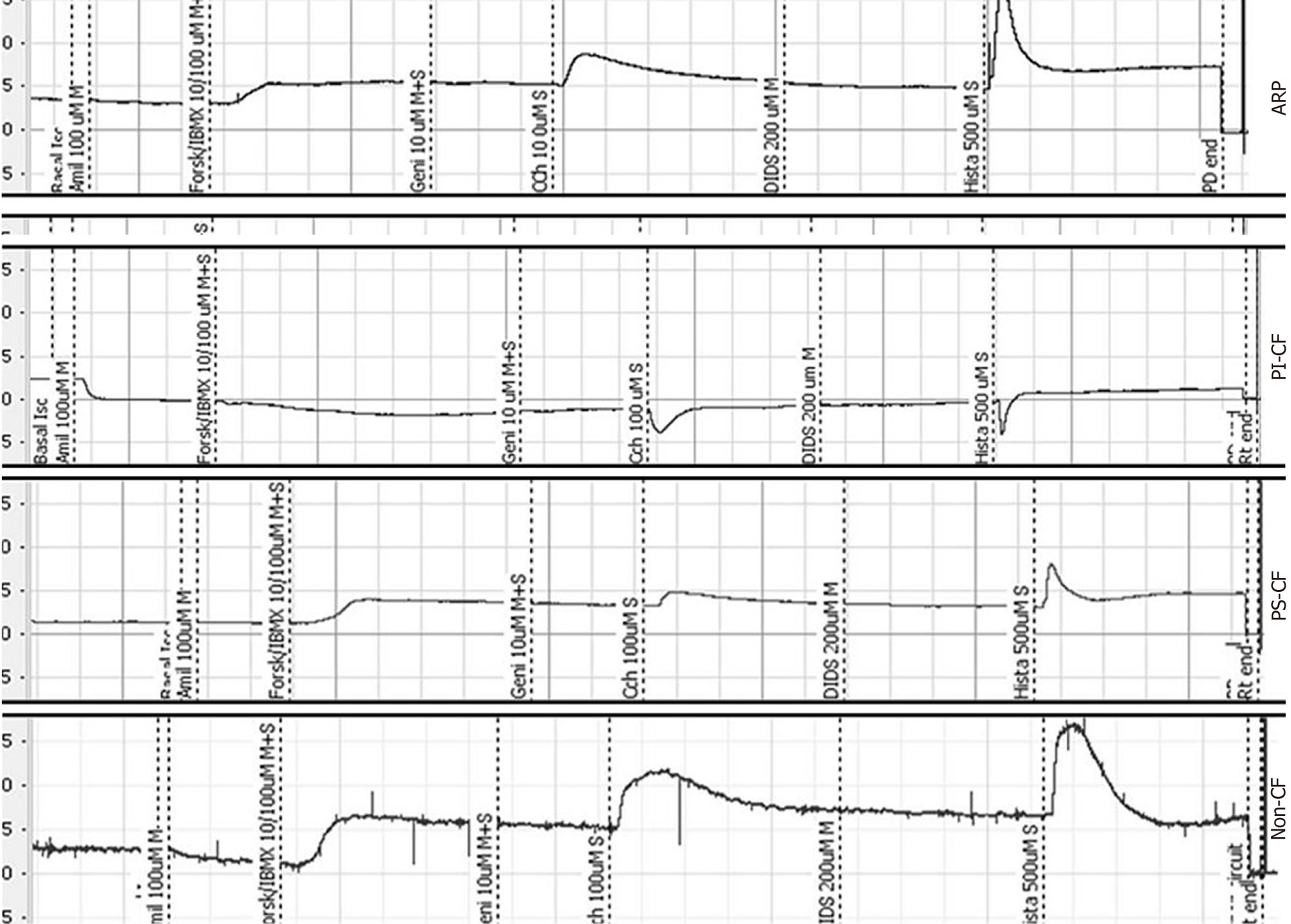Copyright
©The Author(s) 2019.
World J Clin Cases. Nov 26, 2019; 7(22): 3757-3764
Published online Nov 26, 2019. doi: 10.12998/wjcc.v7.i22.3757
Published online Nov 26, 2019. doi: 10.12998/wjcc.v7.i22.3757
Figure 1 Results of standardized cystic fibrosis transmembrane conductance regulator functional test.
Intestinal current measurement tracings from the controversial clinical case (presented herein), cystic fibrosis (CF) patients with pancreatic insufficiency-CF or pancreatic sufficiency-CF and control (non-CF donor). As shown in the top panel, there were positive tissue responses to forsk/IBMX: Forskolin/3-isobutyl-1-methylxanthine, Carbachol and Histamine clearly visible in acute recurrent pancreatitis and not consistent with CF diagnosis. ARP: Acute recurrent pancreatitis; CF: Cystic fibrosis; PI-CF: Pancreatic insufficiency-cystic fibrosis; PS-CF: Pancreatic sufficiency-cystic fibrosis.
Figure 2 Results of cystic fibrosis transmembrane conductance regulator functional assays.
A: Membrane depolarization by single cell fluorescence analysis performed in monocytes with (black trace) and without (white trace) stimulus added at 5 min. The cystic fibrosis (CF) index was calculated as reported[10]; B: Normalized volume increase of individual organoids obtained during Forskolin-induced swelling assay. Organoids were obtained from the acute recurrent pancreatitis patient carrying the mutation G542+/-, a non-CF subject with or without pre-incubation with cystic fibrosis transmembrane conductance regulator-inh72 and with stimulation with the potentiator VX770, and a CF patient. Box and whisker plots (10th-90th percentiles) correspond to the normalized volume increase with respect to the baseline for each subject; the midline in boxes indicates median. Symbols indicate significant differences (one way-ANOVA; aP < 0.05; bP < 0.02) identified by Dunn’s method to compare all groups vs the non-CF control. CFTR: Cystic fibrosis transmembrane conductance regulator; CF: Cystic fibrosis; CFI: Cystic fibrosis index; FIS: Forskolin-induced swelling.
- Citation: Caldrer S, Bergamini G, Sandri A, Vercellone S, Rodella L, Cerofolini A, Tomba F, Catalano F, Frulloni L, Buffelli M, Tridello G, de Jonge H, Assael BM, Sorio C, Melotti P. Cystic fibrosis transmembrane conductance regulator functional evaluations in a G542X+/- IVS8Tn:T7/9 patient with acute recurrent pancreatitis. World J Clin Cases 2019; 7(22): 3757-3764
- URL: https://www.wjgnet.com/2307-8960/full/v7/i22/3757.htm
- DOI: https://dx.doi.org/10.12998/wjcc.v7.i22.3757










